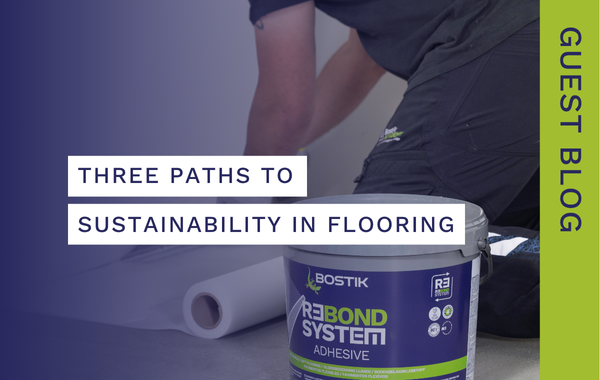Yuliya Nam-Wright, Head of Sustainability at Bostik, outlines three key ways the flooring industry can meet its sustainability goals
Sustainability is no longer a ‘nice to have’ – it’s a necessity. With growing pressure from regulators, specifiers, and consumers alike, we in the flooring industry have a duty to continue pushing the boundaries of what’s possible when it comes to environmental performance. So, where do we start?
Here are three areas with real potential for making a positive impact.
- Environmental Product Declarations
Transparency is crucial in demonstrating compliance with green building standards like LEED or BREEAM. Publishing verified environmental data, such as Environmental Product Declarations (EPDs), fosters trust between manufacturers, customers, and regulatory bodies.
Beyond compliance, EPDs provide manufacturers with insights into their products’ environmental hotspots, enabling targeted efforts to reduce emissions, waste, or resource consumption. For example, an EPD might reveal that a flooring adhesive has a significant carbon footprint due to its chemical formulation, prompting innovation towards bio-based alternatives.
EPDs also include information about recyclability and end-of-life options, offering a more complete picture of circularity. This helps architects, designers, and contractors make informed, environmentally responsible choices.
- Smarter packaging
Packaging is a major part of a product’s environmental impact. In recent years, our industry has made important strides, including transitioning to buckets made from post-consumer recycled (PCR) plastics, reductions in overall packaging weight, and streamlined formats such as one-part smoothing compounds that have helped cut waste and reduce emissions.
But there’s more to be done. It’s vital that we keep interrogating packaging materials, formats, and logistics to make what improvements we can – whether that’s adopting refillable systems, reducing single-use components, or optimising for recyclability.
- Product innovation
Of course, the drive towards sustainability also depends on product innovation, with companies developing low-carbon adhesives and smoothing compounds that reduce environmental impact while maintaining performance.
A great example is Bostik R3BOND®, our adhesive grid system that combines an adhesive encapsulated within a grid for easy installation and clean removal of vinyl and LVT flooring – leaving no residue behind, even years later. Once removed, the R3BOND® system leaves the subfloor needing minimal preparation, enabling genuine flooring recyclability and supporting circular design principles.
This is the kind of innovation that we as an industry need to prioritise, along with the use alternative binders, bio-based polymers, and lightweight formulations to minimise carbon emissions during production and installation.
Sustainability in flooring is a challenge that no single company can tackle alone. The industry has a long history of developing installation standards through collaborative efforts, and there’s no reason why this existing model can’t be extended to sustainability by incorporating guidelines for sustainable installation practices, backed up by training programmes to educate installers about the importance of proper product selection and material handling.
By aligning goals, pooling resources, and embracing innovation, stakeholders across the supply chain can ensure that flooring not only improves the aesthetic appeal of spaces – but also supports a healthier, more sustainable world.
Bostik is part of Arkema, a global leader in speciality chemicals. As a supporter of the United Nations Global Compact, Arkema has committed to the 2030 Agenda for Sustainable Development.

